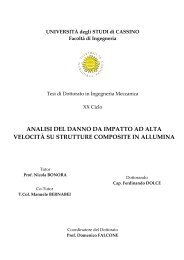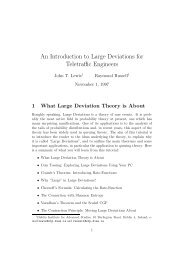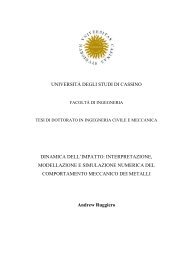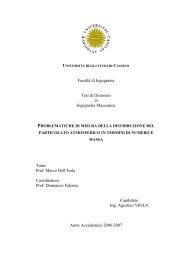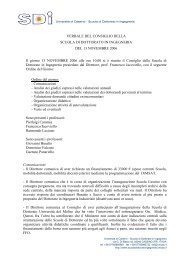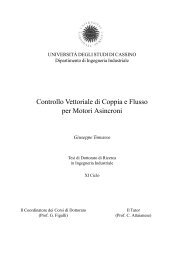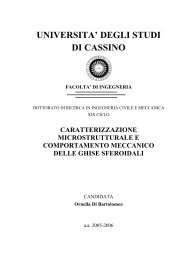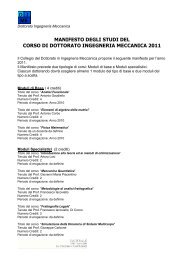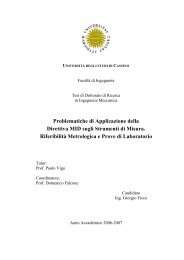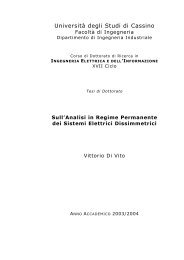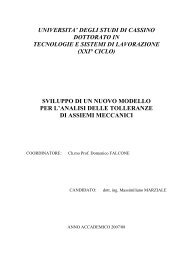Finite Strain Shape Memory Alloys Modeling - Scuola di Dottorato in ...
Finite Strain Shape Memory Alloys Modeling - Scuola di Dottorato in ...
Finite Strain Shape Memory Alloys Modeling - Scuola di Dottorato in ...
Create successful ePaper yourself
Turn your PDF publications into a flip-book with our unique Google optimized e-Paper software.
where d is a user-def<strong>in</strong>ed parameter which controls the smoothness of theregularized norm. For small values of the parameter d , the regularized norm of theGreen-Lagrange stra<strong>in</strong> tensor tends to the Euclidean one so that d <strong>in</strong><strong>di</strong>rectlymeasures the <strong>di</strong>fference betweenEtand Et. In this way, the quantity Etisalways <strong>di</strong>fferentiable, even <strong>in</strong> the case Et = 0 with d > 0 .5.1.3 Solution AlgorithmThe solution of the mo<strong>di</strong>fied time-<strong>di</strong>screte counterpart of the model is approachedwith a pre<strong>di</strong>ctor corrector procedure, typical used for the classical theory ofplasticity. The algorithm consists <strong>in</strong> evaluat<strong>in</strong>g an elastic trial state, <strong>in</strong> which the<strong>in</strong>ternal variables rema<strong>in</strong> constant and <strong>in</strong> verify<strong>in</strong>g the admissibility of the trial limitTRfunction. Then, if the trial state is admissible ( f ≤ 0 ), the step is effectively elastic,i.e. there is no transformation stra<strong>in</strong> development and it represents the solution;TRotherwise, if the trial state is not admissible ( f > 0), the step is <strong>in</strong>elastic and a newsolution has to be evaluated. The transformation stra<strong>in</strong> tensorthrough <strong>in</strong>tegration of the evolutionary equations.The <strong>in</strong>elastic step is solved us<strong>in</strong>g the follow<strong>in</strong>g procedure.Ethas to be updatedFirst of all, the assumption γ = 0 is done, i.e. it is assumed that there is an evolv<strong>in</strong>gphase transformation state <strong>in</strong> which 0 ≤ Et< εL. The equation (5.9) is rewritten <strong>in</strong>residual form asC −1 −1 −1 −1 −1⎧ ⎪R =− Ctn ,+ Ut exp( Δ ζ Ut fUt ) Ut= 0⎨Δζ⎪⎩ R = dev( Y) − R=0(5.11)A new value ofa Newton-Raphson method.Ctis evaluated solv<strong>in</strong>g these seven scalar non-l<strong>in</strong>ear equations with81



